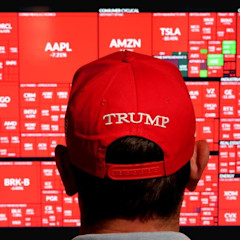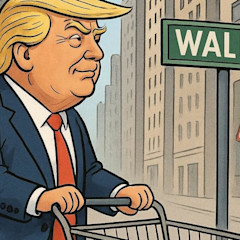The Echo Trade: An Ultra-Rare (and Profitable) Stock Pattern
|
Note From Dustin: Welcome to a special edition of Truth & Trends with Enrique Abeyta. This is normally an email-only service. But Enrique’s latest idea is so powerful, I’ve received special permission to share it with you. If you would like more of Enrique’s insights and analysis, please sign up for a FREE subscription here. |
One of my favorite aspects of trading is finding patterns in the market that repeat like clockwork.
Today, I want to tell you about one of the rarest (and most profitable) patterns I’ve ever seen.
It’s an incredible money-making opportunity that we only see emerge once in a decade — if that.
But based on what I’ve seen during my research, it’s a pattern that’s set to happen again very soon.
It’s what I call the “echo trade.” Now, what exactly does that mean?
Introducing the Echo Trade
An echo trade is when you find a stock that was much higher several years ago and has now begun to recover to those old highs.
Often, those highs are two… three… or even five times higher than where the stock is trading right now.
It’s a very rare opportunity that typically only happens in the aftermath of a once-in-a-decade stock market crash.
Over my 30-year career, I have only seen echo trades emerge twice. The first time was back in the early 2000s after the bursting of the internet bubble.
There were plenty of stocks that had fallen 90% or more during that crash, many of them even going bankrupt.
The ones that didn’t go bankrupt, however, were positioned for huge returns. Want a great example?
Here’s the chart of e-commerce giant Amazon.com (AMZN) from 1997 to the end of 2002…
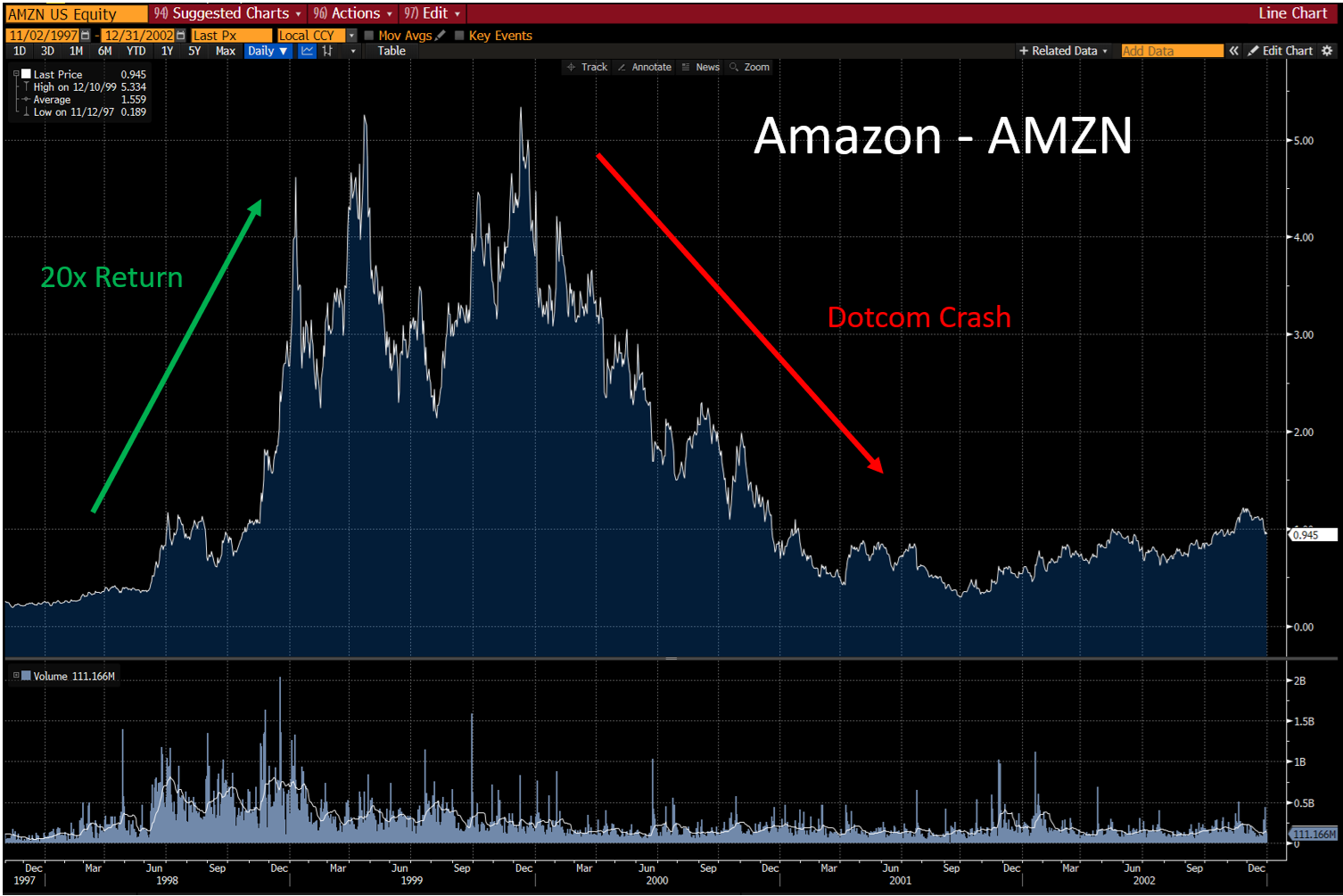
Amazon shares skyrocketed from less than a split-adjusted $0.22 a share to $5 a share in 1999. That’s a 20-fold return in just two years!
Then from its peak in December 1999, the stock collapsed and fell to a low of $0.31 by September 2001 — almost a complete round trip.
Unlike many of its internet competitors, though, Amazon did not go bankrupt.
The company survived, and the stock found firm footing. Over the next couple of years, it began to move up gradually.
The stock originally soared because Amazon was building a great company with a massive market opportunity.
Perhaps it shouldn’t have gone up as quickly as it did, but it went up because it had potential. Once the company survived, it began to realize that potential.
Here’s how the stock did over the next decade…
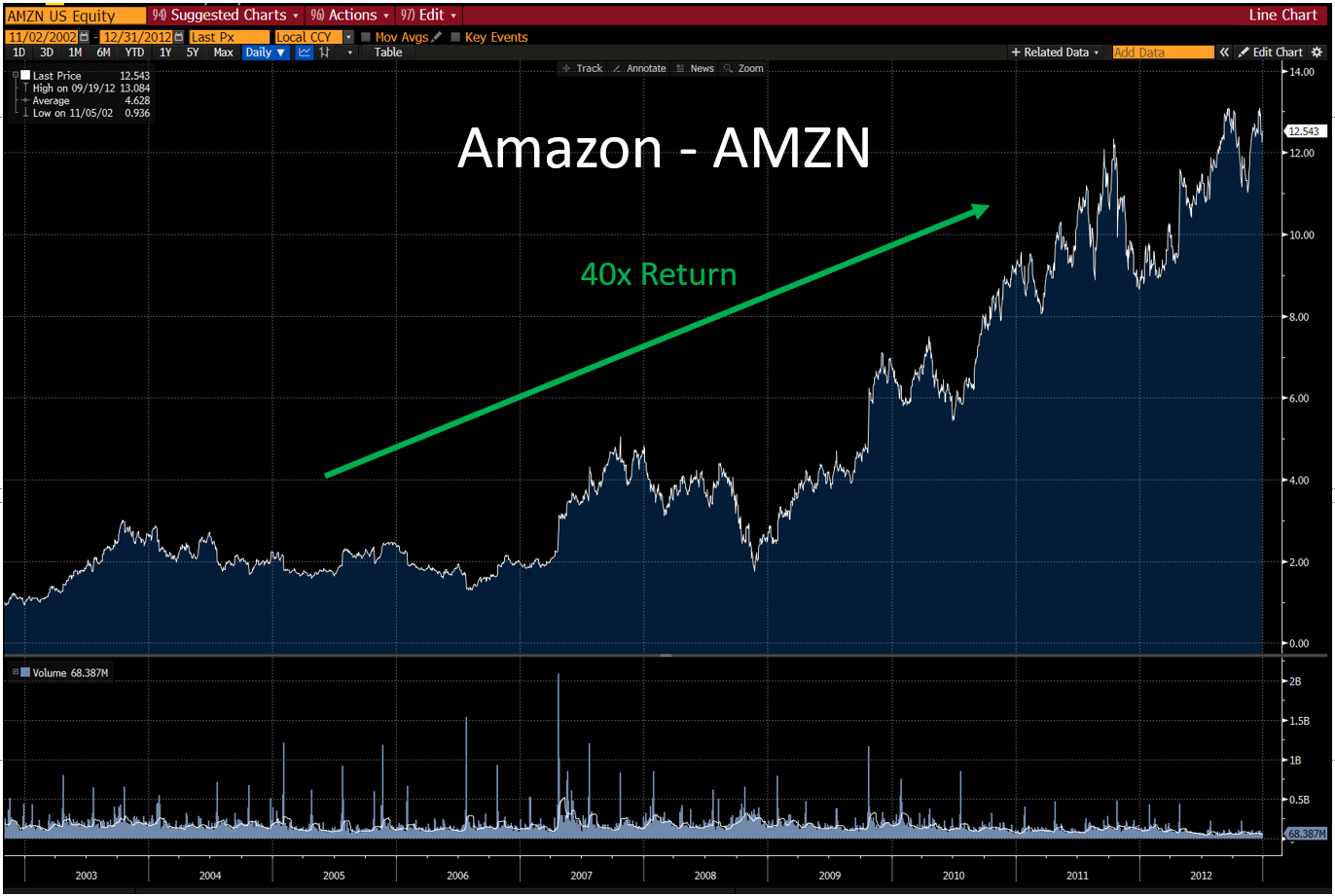
The stock was up more than 40-fold by the end of 2012!
I bet you probably know what happened after that. But here’s the full chart from 1997 to today just in case…
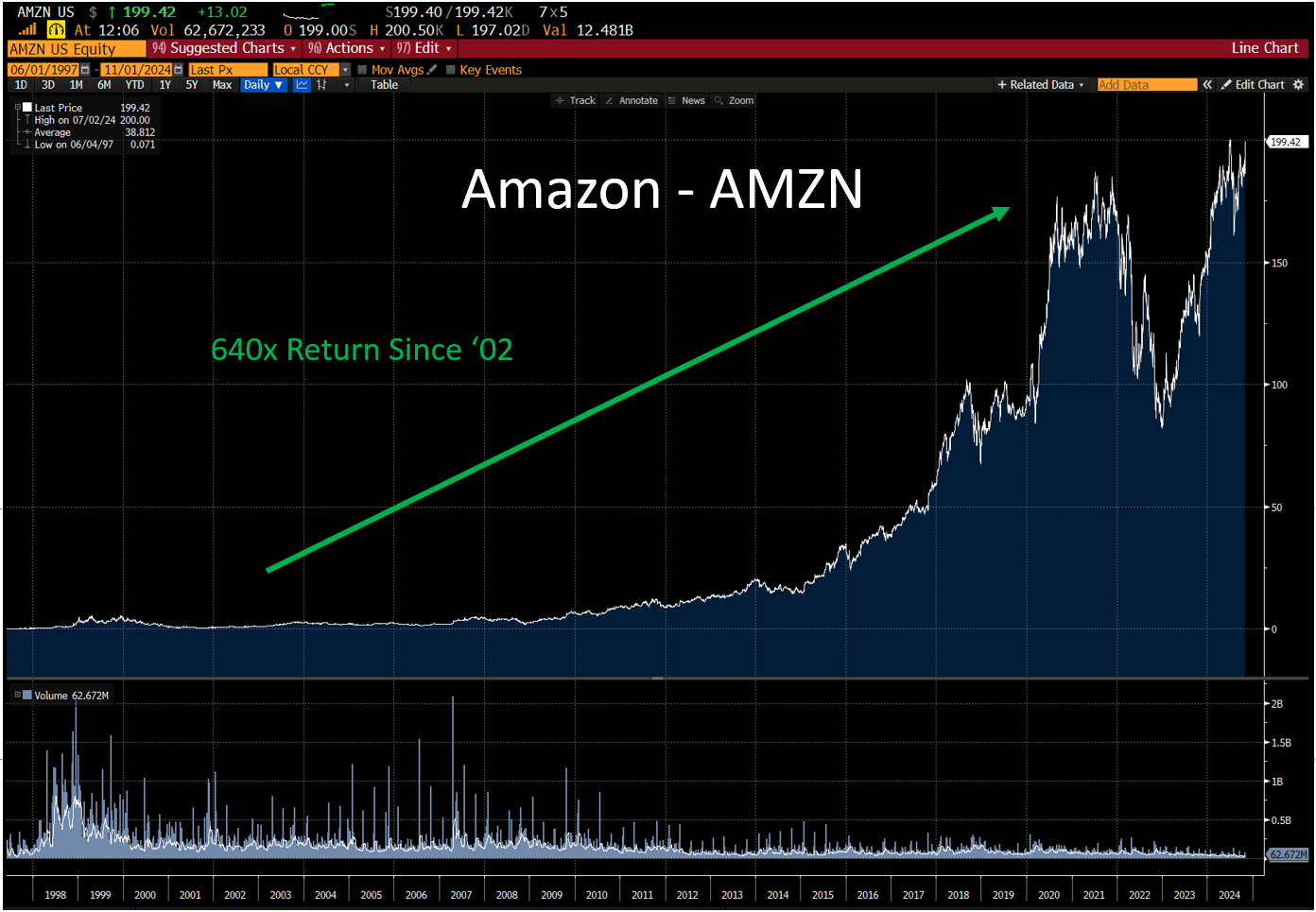
From that low of $0.31 in 2002, the stock is up an incredible 640 times!
This is a classic example of an echo trade, a company with huge potential that sees its stocks soar.
Often the stock goes much higher than it should in the near term on investor excitement…
Then it crashes — not because it’s a bad company, but rather because it was way ahead of itself.
Eventually, the company survives and continues to execute on its business plan and potential. The stock also stabilizes and moves higher.
It remains, however, well below its previous heights. At the end of 2002, Amazon stock was trading at roughly $1 per share.
That’s up three-fold from the bottom, but still 80% below the high from a few years earlier.
As the company realizes even more of that potential and executes its huge opportunity, it begins to go even higher.
That’s when the trade becomes an “echo boom.”
While Amazon may be the biggest of the stocks to emerge from the internet bubble collapse, dozens of other echo trades also became “echo booms” after this era.
And these opportunities are some of the biggest stock winners of all time.
Echo trades may be rare, but they will continue to happen again and again as long as human emotion continues to drive the market.
As I mentioned earlier, I’ve only seen this opportunity play out twice in my trading career.
But now I’m seeing a new wave of echo trades emerging today.
If you want to stay ahead of it with me, claim your FREE Truth & Trends membership today!
|
While Truth & Trends is currently email only, you can find an introduction from Enrique here. Then sign up for a FREE no-obligation membership here. |







